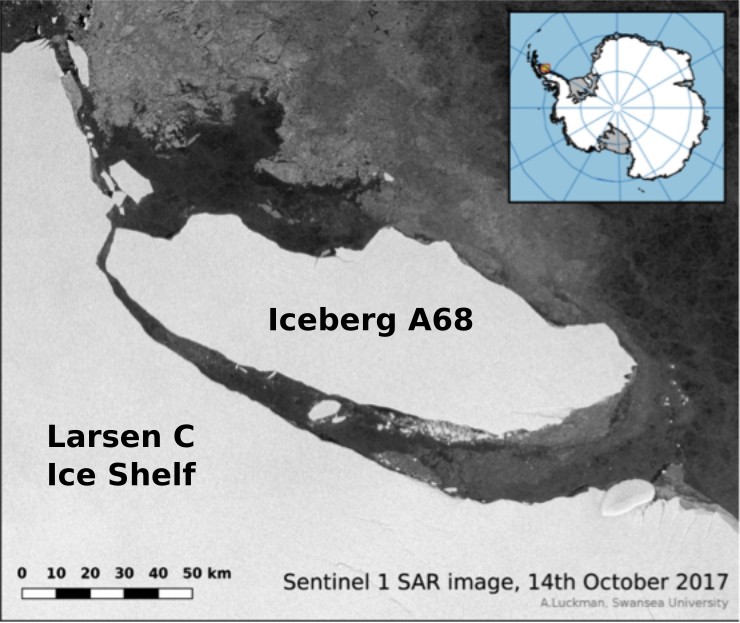In July 2017, the world’s largest iceberg known as A68 calved from the Larsen C Ice Shelf, located in the western Weddell Sea, Antarctica. Since then, A68 has lost two chunks of ice, A68-B and A68-C, but still remains a giant after more than 3 years. How did it feel to be the greatest, A68? Being the greatest With a length of 175 km and being about 50 km wide, this giant iceberg also appropriately ...[Read More]
Do clouds affect melting over Antarctic ice shelves?
The Antarctic Peninsula is the ‘canary in the coalmine’ of Antarctic climate change. In the last half-century it has warmed faster than most other places on Earth, and considerable change has consequently been observed in the cryosphere, with several ice shelves collapsing in part or in full. Representing this change in models is difficult because we understand comparatively little abo ...[Read More]
Back to the Front – Larsen C Ice Shelf in the Aftermath of Iceberg A68!

Sentinel 1 SAR image [Credit: Adrian Luckman, Swansea University].
Much of the Antarctic continent is fringed by ice shelves. An ice shelf is the floating extension of a terrestrial ice mass and, as such, is an important ‘middleman’ that regulates the delivery of ice from land into the ocean: for much of Antarctica, ice that passes from land into the sea does so via ice shelves. I’ve been conducting geophysical experiments on ice for over a decade, using mostly s ...[Read More]
